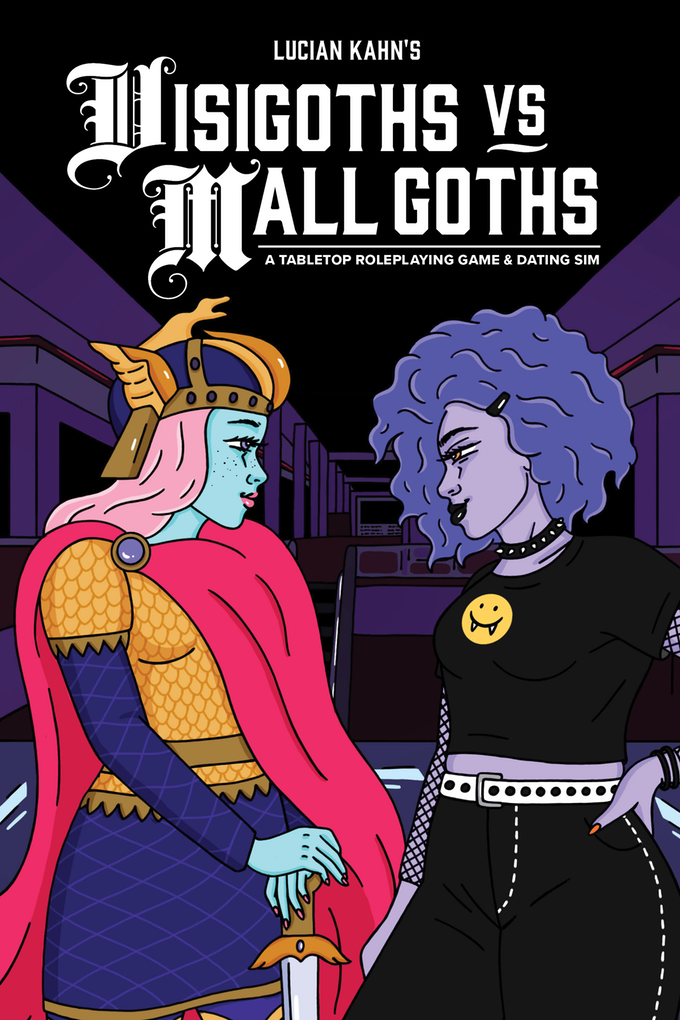I’m on a study project to improve my understanding of roleplaying games. To this end, I already have two reading projects, A Game Per Year and An Adventure Per Year. This is the third, with the goal of reading or playing 52 games made in the last few years. Originally I considered making this “A New RPG Per Week” and that’s where the number 52 comes from, even though a weekly schedule is probably not within my abilities.

Visigoths vs Mall Goths is a recently released American roleplaying game by Lucian Kahn. It’s a humorous love letter to the Los Angeles mall goth culture of the Nineties.
There are two cliques of goths hanging out at the mall, the local Mall Goths and Visigoths who have traveled there through time. Both are teenagers, both frequent specialty shops and have crushes on their clerks.
The game has a simple conflict resolution system, with the interesting detail that all damage is emotional. Even from combat. Thus, if two characters punch each other, the fallout consists of hurt feelings around the fight, not the physical results. It’s a lovely way to re-contextualize what a fight means, perfectly in line with the type of physical conflict that was part of my life when I was a kid in the Nineties.
Much of the substance of the design is in the mall setting itself, with detailed descriptions of shops and clerks. The game describes itself as “a tabletop roleplaying game & dating sim” and the dating sim part requires a selection of supporting characters. They represent a broad range of interests, sexualities, ethnicities and gender expressions.
There’s also a lot of humor. A record store is called Big Disc Energy and there’s an older gay couple called Gaybar and Gaydar.
I like the cheerful frivolity of the game. It immediately feels like it’s fun to play, especially if the Nineties goth theme resonates with you.
The wider context for Visigoths vs Mall Goths is the shift from Eighties nostalgia to Nineties nostalgia, a natural development as a new cohort of creative artists starts to use their own youth as material. Thanks to the specificity of its setting, the game rises above general nostalgia to describe something true.